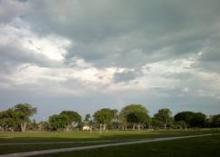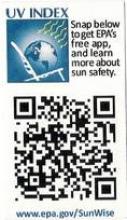It’s a good news/bad news story.
First, the good news: The ozone layer is recovering. The once-ominous news about depletion of the protective ozone surrounding the earth is now much sunnier, Drusilla Hufford of the U.S. Environmental Protection Agency said.
"It is likely we will have an ozone layer that recovers to what it was before human intervention by 2050 or 2065," Ms. Hufford said at the Florida Society of Dermatology & Dermatologic Surgery (FSDDS) annual meeting.
The bad news is that is still at least 38 years away.
"This is ultimately a self-righting system, but it will not happen immediately," said Ms. Hufford, director of the EPA’s Stratospheric Protection Division. Chlorofluorocarbons (CFCs) and other ozone-depleting substances last a long time. So even though levels are decreasing, we are still at risk of increased UV exposure in the meantime.
In fact, 2011 featured one of the largest holes in the ozone layer in the Southern hemisphere. NASA compiled a great video of daily satellite images from July to December 2011 that shows the ozone hole forming and dissipating as part of its normal seasonal fluctuation.
Despite the 2011 event, Ms. Hufford remains optimistic. "Global ozone was likely to get a lot worse in absence of the Montreal Protocol, and it has not."
The EPA is going beyond the science to help physicians and others deliver effective sun protection messages. For example, if you are looking for a new angle on your sun protection message, consider pointing your patients to the EPA SunWise site. They can find a daily UV index forecast by city or zip code. Want help convincing patients to move outdoor activities earlier or later in the day to avoid peak sun exposure? The EPA service, provided in conjunction with the National Weather Service, also breaks down UV levels by hour of the day.
If you have a patient who likes technology, they can get even more precise information. Have them scan this QR code from the SunWise program with their smartphone. It provides real-time UV exposure data for their precise location using the phone’s GPS technology.
The question remains: How bad would the future have been if we’d done nothing? NASA scientist Paul Newman and colleagues at NASA’s Goddard Space Flight Center developed ‘The World We Avoided’ simulation to answer that question. It shows what earth could have been like if 193 countries had not signed the Montreal Protocol and agreed to curtail production of ozone depleting chemicals starting about 25 years ago
Here is an excerpt: "The year is 2065. Nearly two-thirds of Earth’s ozone is gone — not just over the poles, but everywhere. The infamous ozone hole over Antarctica, first discovered in the 1980s, is a year-round fixture, with a twin over the North Pole. The ultraviolet (UV) radiation falling on mid-latitude cities like Washington, D.C., is strong enough to cause sunburn in just 5 minutes. DNA-mutating UV radiation is up 650%, with likely harmful effects on plants, animals, and human skin cancer rates."
Ms. Hufford added, "Not only has the Montreal Protocol been enormously successful worldwide in preventing massive destructive of ozone layer, it is also likely helping with climate change."
– Damian McNamara (@MedReporter on Twitter)



